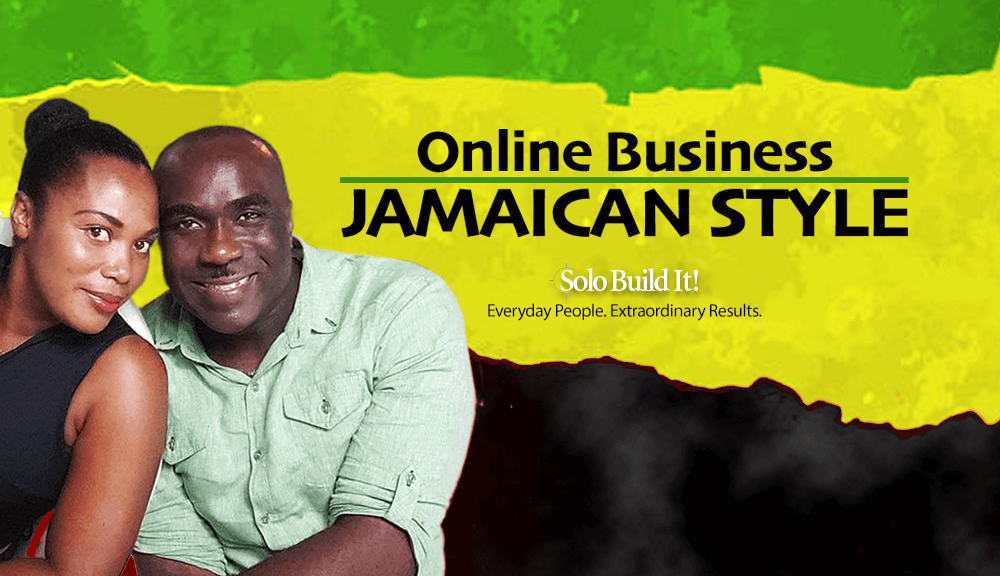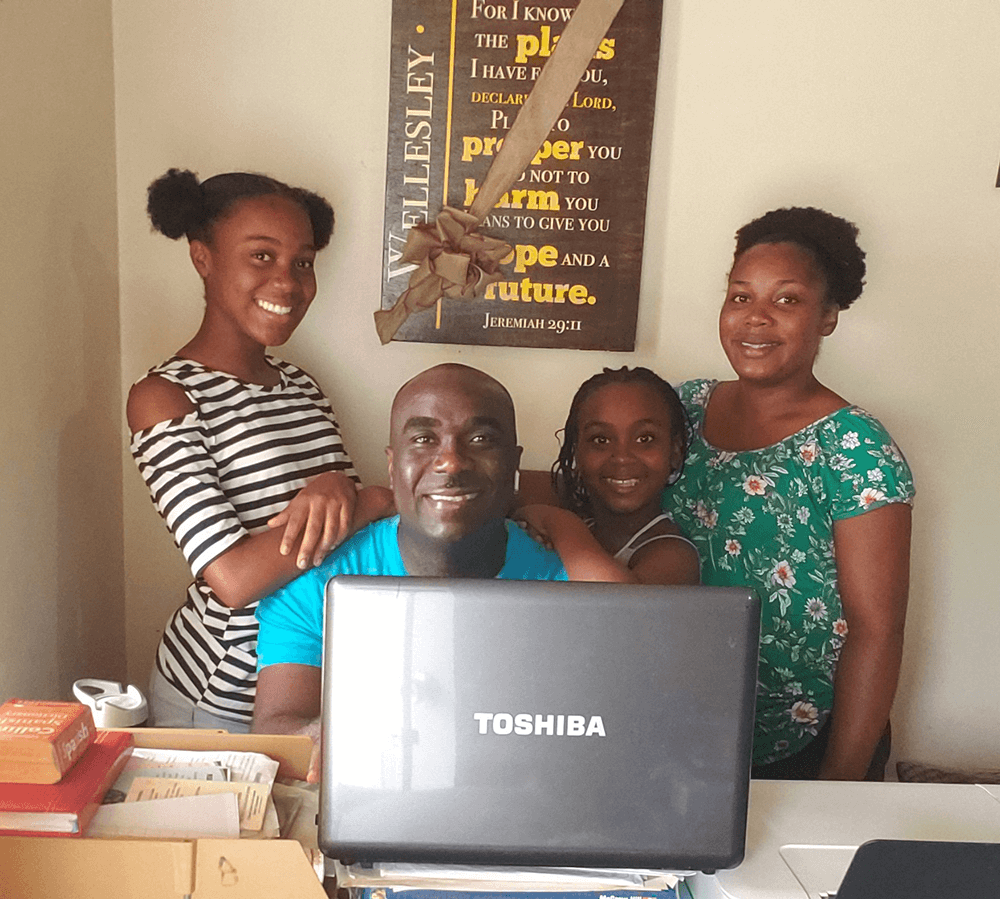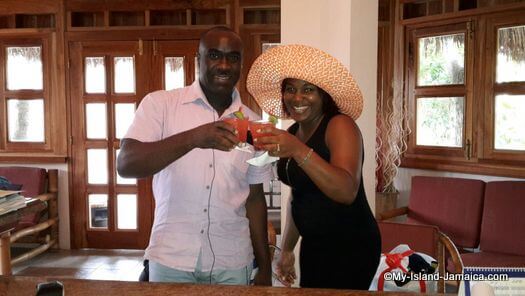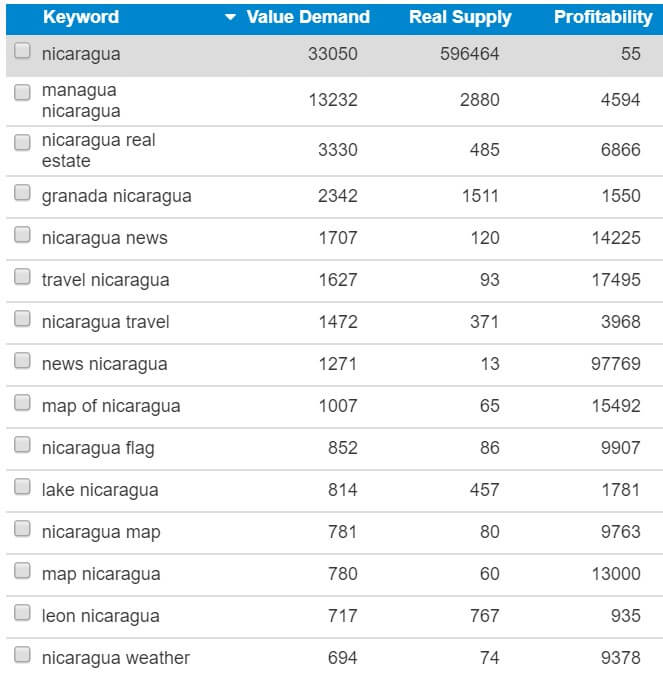
The success of any business, online or offline is to know what your customers want and give it to them. Without a doubt, SBI!’s ‘Brainstorm It!’ tool provided that for me.Wellesley Gayle from www.my-island-jamaica.com.
When Wellesley first came across Solo Build It! (SBI!) in 2007, he didn’t plan to build a website, let alone a web business. He simply wanted to promote SBI! as an affiliate to earn some commission.
Little did he know that his side project of earning part-time affiliate income would turn into a fully fledged online business. A business that would eventually allow him to quit his day job and support his family of four.
But, let’s take it from the beginning, and hear Wellesley’s solopreneur success story in his own words.

1. What were your main goals when you started www.my-island-jamaica.com in 2007? Have these goals changed over time?
It’s quite a funny story. I was looking for online business opportunities, primarily for affiliate part-time income. I ran into a site that mentioned Solo Build It! (SBI!). I joined as an affiliate instantly as the commission rate was attractive and it appeared to be a great product.
I started promoting SBI! online and off, with little success, until I remembered getting an email from SBI!’s affiliate manager.
It spoke to the fact that the best way to promote a product, is to “be a product of the product.” In other words, the email suggested that I should own SBI! to get first-hand experience.
I thought about it and eventually bought SBI!. Not only did this help me get several commission payments from SBI! as an affiliate, but I also started earning AdSense income in just a few months after I began building my own site.
My goals have certainly changed over time. When I started, I was focused on building relationships, establishing my brand and earning a part-time income. Today, the goal for my online business is to provide a full-time income for me and my family.
Having that first-hand experience makes it much easier to write a comprehensive and unique product review. Your readers benefit because your review helps them make an informed decision. You benefit because you make a commission when a reader buys.
For Wellesley, the true benefit of using Solo Build It! himself was much larger than earning the 60% commission on any affiliate sales. He built a successful online business, based on his love for his home country, Jamaica.
And because he owns his business, he has much greater control over it. For example, he isn’t limited to a single way of earning an income. Affiliate marketing is just one possible monetization method, not his sole business model. If one income stream diminishes, he can fall back on his other methods. More on that below.

2. You cover many topics about Jamaica on your site. How do you know what your readers and prospective customers are looking for?
The success of any business, online or offline is to know what your customers want and give it to them. Without a doubt, SBI!’s ‘Brainstorm It!’ tool provided that for me. Not only does it tell me what topics my readers are looking for, but it also gives me the demand, supply and relative ‘profitability’ of the topics (also known as keywords).
Brainstorm It! helps me to focus on topics that my readers want to read. It also allows me to prioritize the keywords that are likely to rank faster. That worked wonders for me when I started my site in 2007, and it is still an invaluable help in growing my business today.
Let’s dive into an example. Say you have followed the niche research and decision process outlined in the Solo Build It! Action Guide. You’ve decided that you will create a website / online business about Nicaragua.
Your result from a brainstorming session with Brainstorm It! would look like this:
You’ll get a list of words or phrases (aka keywords) that people search for at Google and other search engines when they want information about Nicaragua. Along with the keywords, you also get their “value demand,” “real supply” and “profitability” numbers.
Value demand tells you how many people searched for a given keyword in a 30-day period. The “real supply” numbers indicate how competitive a search term is.
The more popular and general a term is, the higher the search volume. These more general keywords usually also have stronger competition.
The profitability of each keyword is simply its value demand divided by its real supply, times 1,000. The higher that number, the better.
When you begin writing content for your site, you want to concentrate on keywords that are easily winnable, i.e. keywords with decent demand and low supply numbers. That’s what Wellesley meant when he mentioned that Brainstorm It! helped him “prioritize the keywords that are likely to rank faster.”
3. Using one of Solo Build It!’s tools (Content 2.0) you’ve created a “Jamaica Forum” with hundreds of user-generated contributions. What’s your strategy behind this, and what part does it play in your site’s success?
You said hundreds, but it is actually thousands. As I write this, I have 3,977 approved and pending submissions, in addition to thousands of comments!
The basic idea is to build traffic through more content, but it has also given me a great opportunity to hear from my readers (e.g. editorial content) and give them a voice to share their stories (e.g. their visits to Jamaica, etc.) and their passion (e.g. Jamaican poems and Jamaican recipes, etc.).
Another nice side effect of the Content 2.0 pages is that they increase my income through the additional ad exposure on those user-generated pages.
Turns out to be a total win-win-win: for my contributors, my readers, and for me.
What is Content 2.0 exactly? It is a Solo Build It! module that allows you to build forms to invite your visitors to participate on your site. When your visitors submit a reply, that content can become a new page on your site. Visitors can comment on published submissions and you have total control over this content, deciding whether to accept it as is, edit, or even delete.
Check out these Content 2.0 invitations on Wellesley’s site to get a feel for the variety of ways C2 can be used. For example, Wellesley uses his invitations to ask readers to submit their travel experiences, list their Jamaican businesses or submit their photo contest entries:
4. In which ways do you make money with your online business? Why did you choose these monetization methods, and how well do they perform?
 I monetize primarily with ads (Google AdSense) and affiliate marketing (mainly Amazon). I also have a few site sponsorships/partnerships (see the screenshot about one of my site sponsors), two ebooks and referrals to local companies.
I monetize primarily with ads (Google AdSense) and affiliate marketing (mainly Amazon). I also have a few site sponsorships/partnerships (see the screenshot about one of my site sponsors), two ebooks and referrals to local companies.
My AdSense income fluctuates but is still my main income. With between 7,000 and 8,000 unique visitors per day on average, I believe I can earn a lot more. I am looking to get into one of the top premium ad networks like Mediavine and AdThrive. I keep applying but had no luck so far.
They provide little details as to why my applications were rejected. One potential reason could be that I have a high percentage of non-US traffic.
May I also add that I’ve created several networking opportunities that allowed me to get into some events and even hotels at no cost!
Affiliate marketing is a bit more involved, but still very much on the “passive” side of monetizing your business. If you’re new to affiliate marketing, take a look at our helpful affiliate marketing programs for beginners article.
Once you have a certain amount of traffic, you can apply to advertising networks that – depending on your niche – often pay out more than AdSense. Mediavine, for example, requires that your site receives at least 25,000 sessions (aka visits) per month. AdThrive requires 100,000 pageviews per month.
Traffic alone doesn’t guarantee being accepted though, as Wellesley’s example shows.
The downside of these passive monetization models is their rather low profit potential. You need a lot of traffic to earn a substantial income. Wellesley made the right decision to venture into other, more active and lucrative ways to monetize.
Publishing eBooks is a great income strategy for a site with so much valuable information. Attracting site sponsors and referring potential customers to local businesses are two other good ways to monetize, especially in the travel niche.
You may be wondering how Wellesley makes sure that he gets paid when he refers a visitor to a local business. Contrary to affiliate programs there is no automatic tracking in place.
When I asked Wellesley this question, he said:
“I hand picked those local businesses. And I use SBI! forms to get notified when someone contacts them. However, it is still a partnership where a lot depends on trust.”

5. You’ve recently quit your “day job” to focus fully on my-island-jamaica.com. What plans do you have to grow your business and income further?
The main strategy is… yes, more content – and on a regular basis. I thought of several other strategies, but this is the surefire strategy that has worked for me over time and continues to work — great content!
Over the last two months, I posted a minimum of 3 pages per day, and most of that is answering questions, captured via SBI!’s Content 2.0 tool from my users.
Excellent content, written in your unique “voice,” forms the engine for any online business. Without content, your business cannot attract visitors from the search engines. Without those visitors (aka search engine traffic), you cannot monetize — which is crucial if you want to make a living from your blog. You could of course pay for your traffic. But then you need a product or service with a high profit margin.
And even then it’s unlikely you would sell enough, because “cold” traffic does not convert as well as “warm” traffic. How do you “warm up” your traffic? You wow them with your high-value content that you provide for free. At Solo Build It!, we call this approach “PREselling.”
Wellesley plans to grow his income by publishing more outstanding content, thus generating more traffic to his site. Then he’ll monetize this traffic via his chosen methods (ads, affiliates, referrals, ebooks). Another path to higher income would be to experiment with “active” monetization models like organizing tours to Jamaica or even investing in a small hotel or lodge.
The beauty of being a business owner is that you get to decide which path to travel.

6. Do you use social media to promote your business? If yes, which platform works best for you and why?
Yes, I do. I have approximately 10k people following me on Facebook and some on Twitter. I also have a presence on Pinterest and Instagram but to a lesser extent.
I use a system to auto-post new articles from my RSS feed to my Facebook and Twitter profiles when they are published, and I think that has helped me grow my followers there.
As part of my strategies to develop my business further, I am promoting my YouTube channel (YouTube.com/myislandjamaica) a lot more, which is resulting in rapid growth.
Over the last few months, I’ve been creating more videos. And whenever I do a video, I have a link in the description back to its related page on my website, and vice versa. I keep my website as the ‘root and vine’ though, and those social media accounts as the ‘branches.’
If you enjoy using that social network personally as well, so much the better. You will still have to learn how to best use the social channel for your business. As an SBI! member, you’ll have access to in-depth guidance for the main platforms: Facebook, Twitter, Pinterest, Instagram and YouTube.
7. What has been your biggest challenge so far as a solopreneur?
I would be ungrateful if I said that I had big challenges with my web business. But if you insist, I would have to say better monetization of my traffic, especially income diversification. My income still heavily depends on AdSense.
The second challenge would probably be writing more keyword targeted pages. A lot of my new pages are Content 2.0 pages now (and these are not keyword optimized). On the other hand, many of them give me the opportunity to answer real questions from my readers, so they contribute important content.
First, dig deep into all the information you have about your audience. Review the comments or questions you received (either on your site, on social media or via email). Check your Google Analytics data. Which pages get the most visits? Where do people stay for a long time?
If you have an email list, ask your subscribers directly about their most pressing problem, need or desire.
Then ask yourself: What can you offer to solve that problem or fulfill that desire? Always think about monetization in terms of how helpful it will be to your potential customers.
For some inspiration, check out what fellow SBI! member Luke Barber does. He noticed that a high percentage of visitors consumed his content on mobile. How do people interact with content on mobile primarily? With apps! So he set out to turn some of his most popular content into apps. His business now earns him and his family $100,000 per year.
8. What do you enjoy most about being an online business owner? How has it changed you, your life, your family?
Family Time. It’s just amazing what kind of freedom the Internet has provided us. I do what I like, from home, right where my family is. By the way, my family is loving it! Yesterday we took a day trip to Ocho Rios, it was an absolute blast.
The “digital nomad” trend is growing, along with the so-called “gig economy,” where people replace traditional employee jobs with freelancing. By 2020, 43% of the U.S. workforce will be made up of freelancers, predicts financial software company Intuit.
While the remote work lifestyle presents already a big win in terms of flexibility and location independence, you are still working for someone else. When you build your own online business though, you achieve the ultimate level of work freedom.
Not only can you decide when and where to work, but you also answer to one boss only: yourself! And – perhaps even more important – your business earns income in different ways. It earns income even when you don’t work on it (if you’ve set up passive income streams, as Wellesley did). As a freelancer, you can only sell your time in exchange for money.
That’s why we at Solo Build It! fiercely believe that building your own online business is the best way to achieve the freedom you crave. 😊 Do you agree, disagree? Let us know in a comment.

9. And finally… What’s your top tip for someone who is just starting a solopreneur career?
This is what I would say to him or her…
“Bring your brains and motivation and consider SBI!. Follow the 10-day Action Guide to a T. You can hardly go wrong with it. There are perhaps several other business models and ways to make money online, but SBI! has proven to me that it is the most fun, sustainable and profitable for the investment you will make. SBI! has changed my life for the better and I am sure it can be a life-changer for you, too.”
Ready to follow in Wellesley’s footsteps and change your life for the better?

Latest posts by Margit Streifeneder (see all)
- From Traffic Peaks to Auto-Pilot: A Psychologist’s Website Success Story - March 27, 2025
- From Swim Teacher to Solopreneur: Building Passive Income Online - February 27, 2025
- From Concierge to Global Tours: 10 Lessons for Travel Business Growth - December 19, 2024


